Abstract
We develop a model of the undulatory locomotion of nematodes, in particular that of Caenorhabditis elegans, based on mechanics. The model takes into account the most important forces acting on a moving worm and allows the computer simulation of a creeping nematode. These forces are produced by the interior pressure in the liquid-filled body cavity, the elasticity of the cuticle, the excitation of certain sets of muscles and the friction between the body and its support.
We propose that muscle excitation patterns can be generated by stretch receptor control. By solving numerically the equations of motion of the model of the nematode, we demonstrate that these muscle excitation patterns are suitable for the propulsion of the animal.
Full text
PDF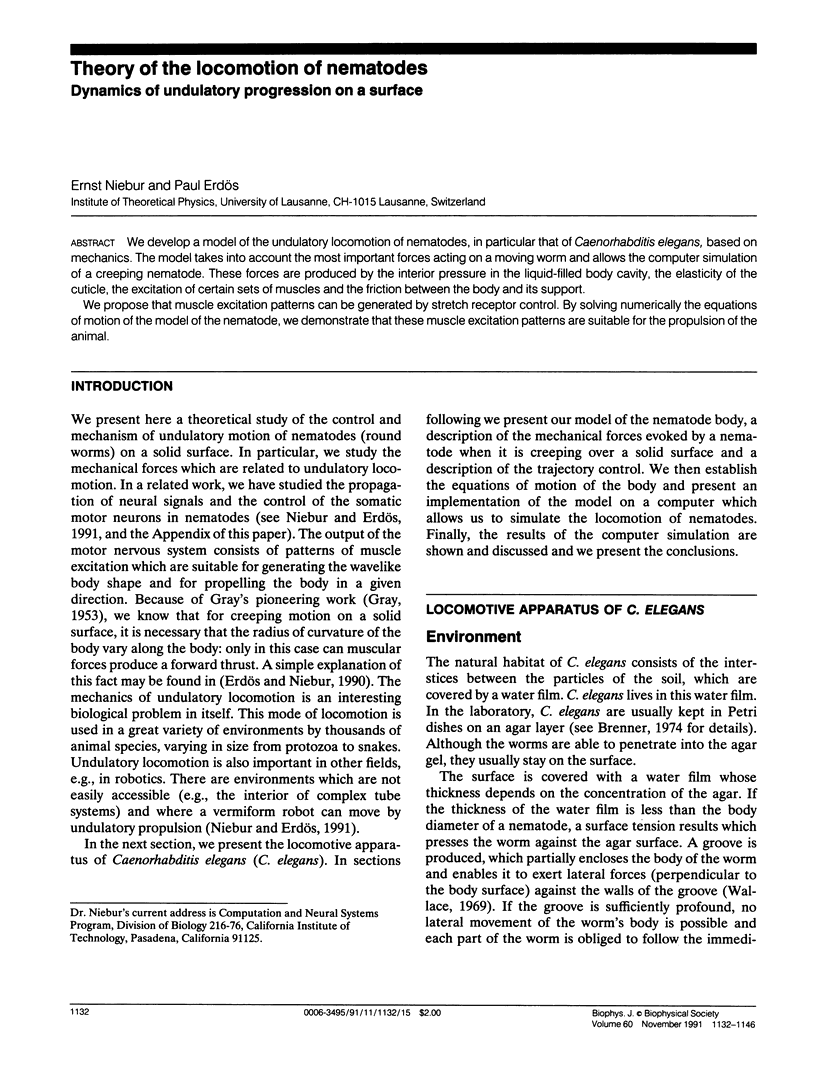
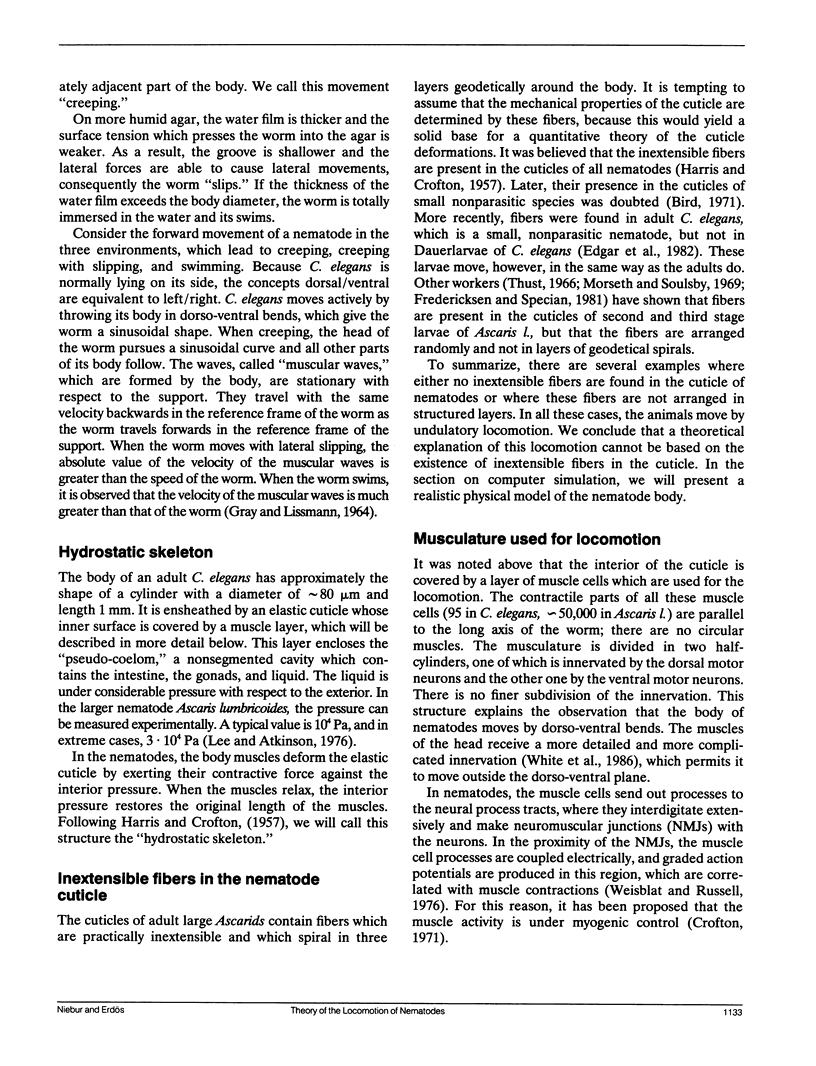
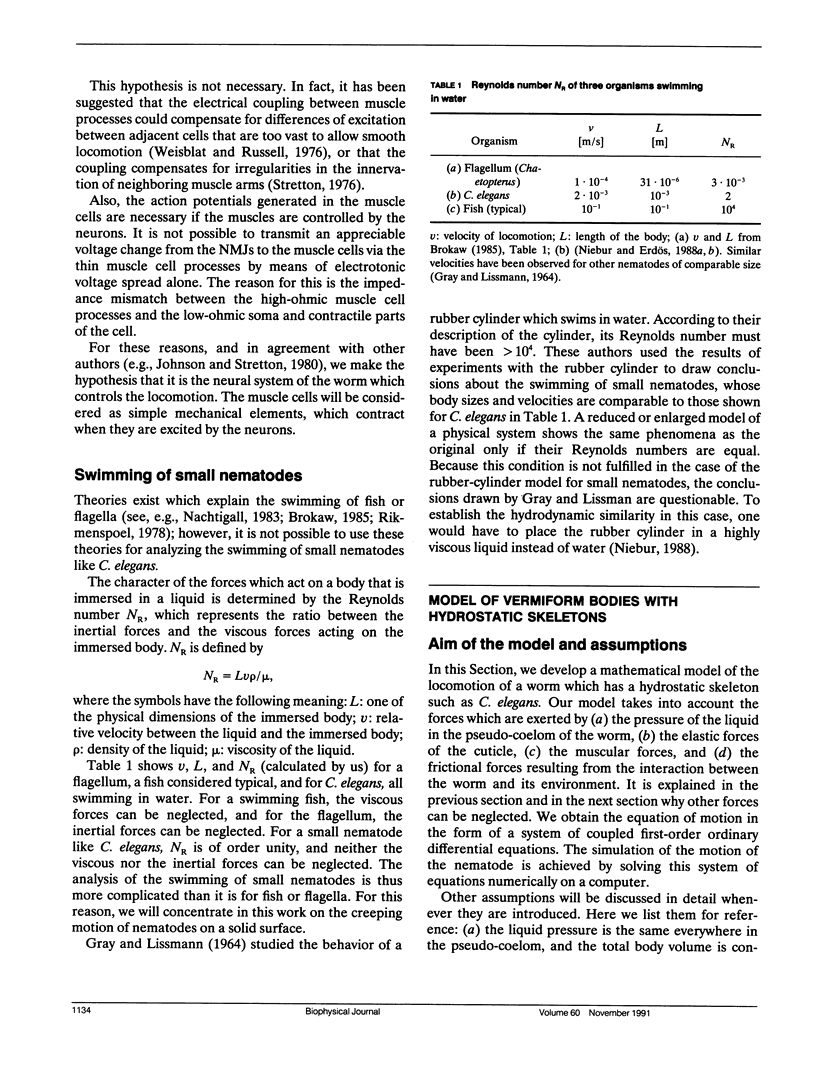
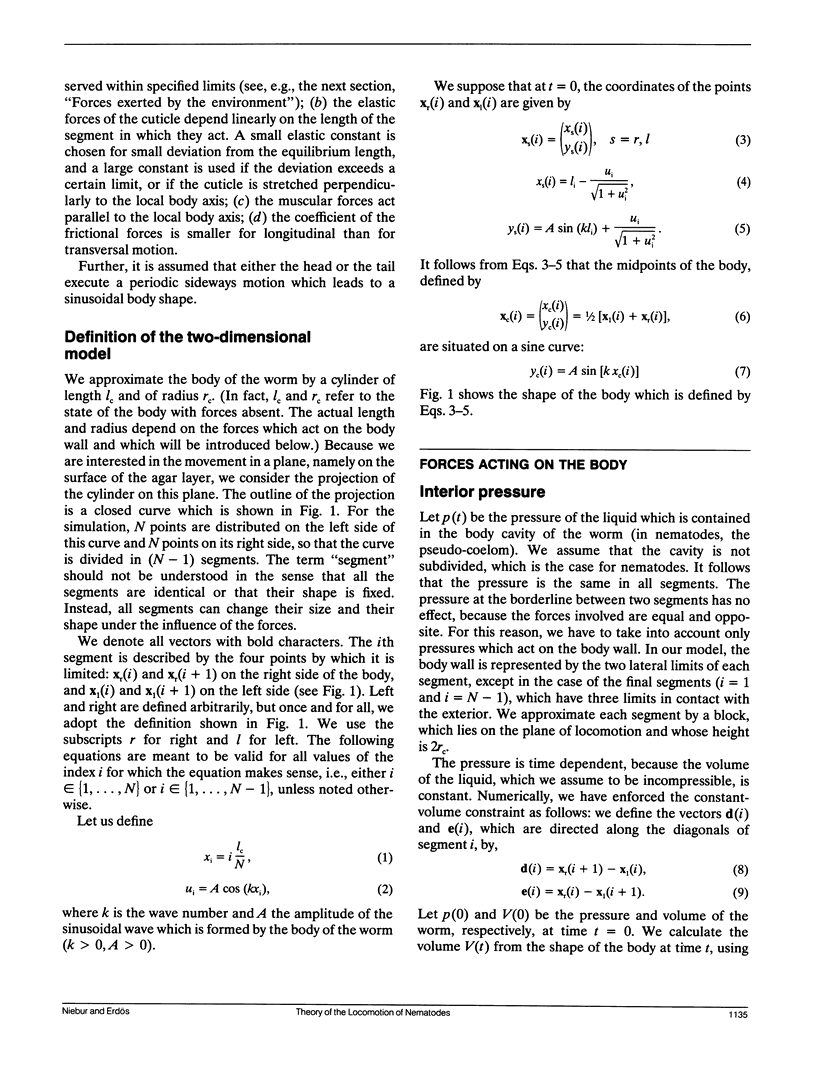
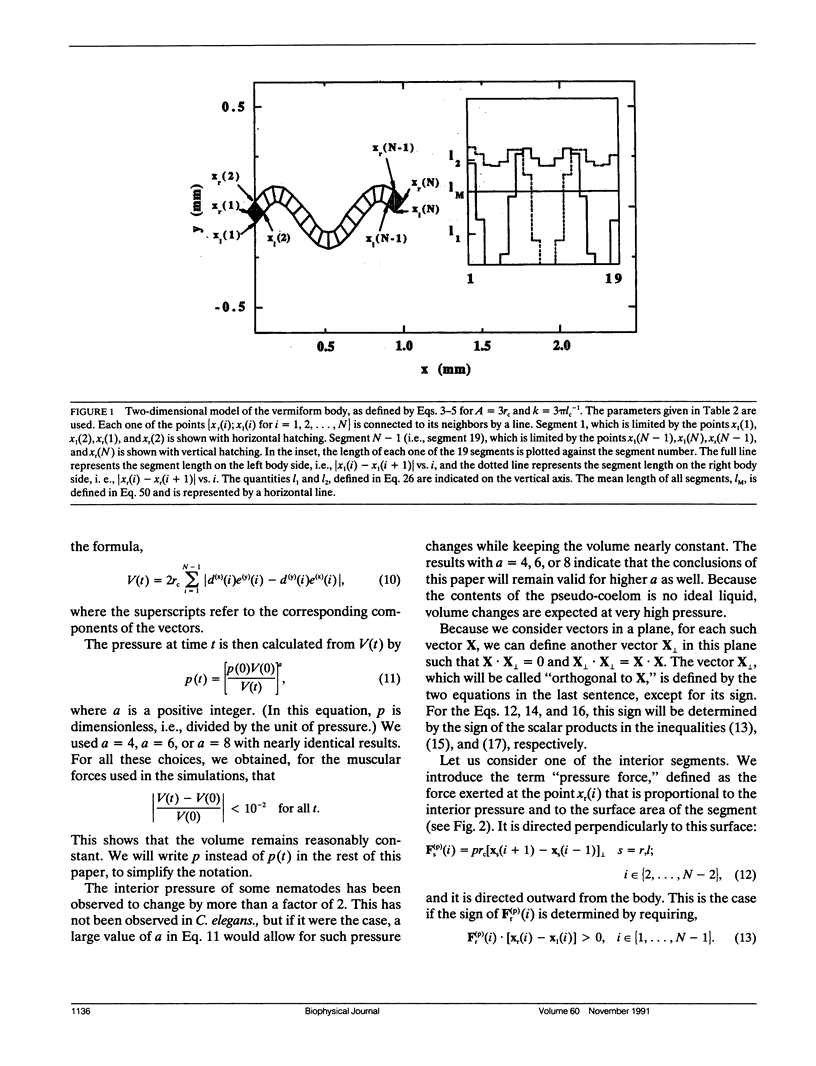
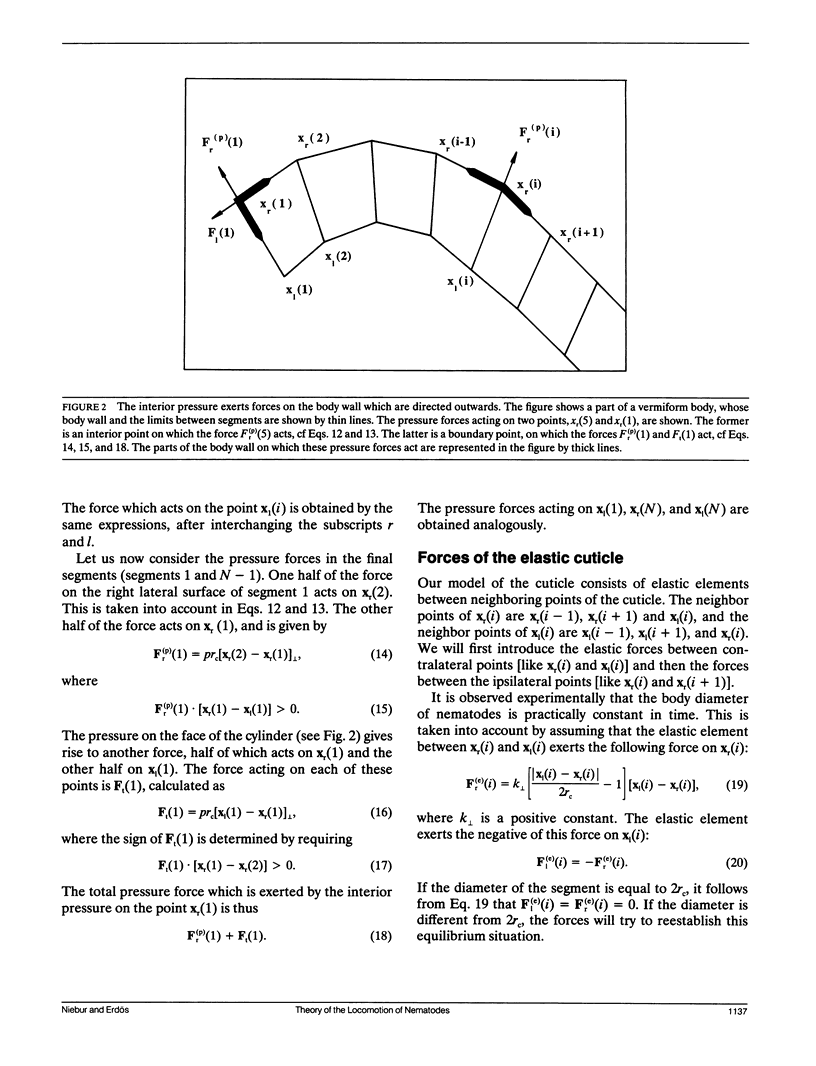
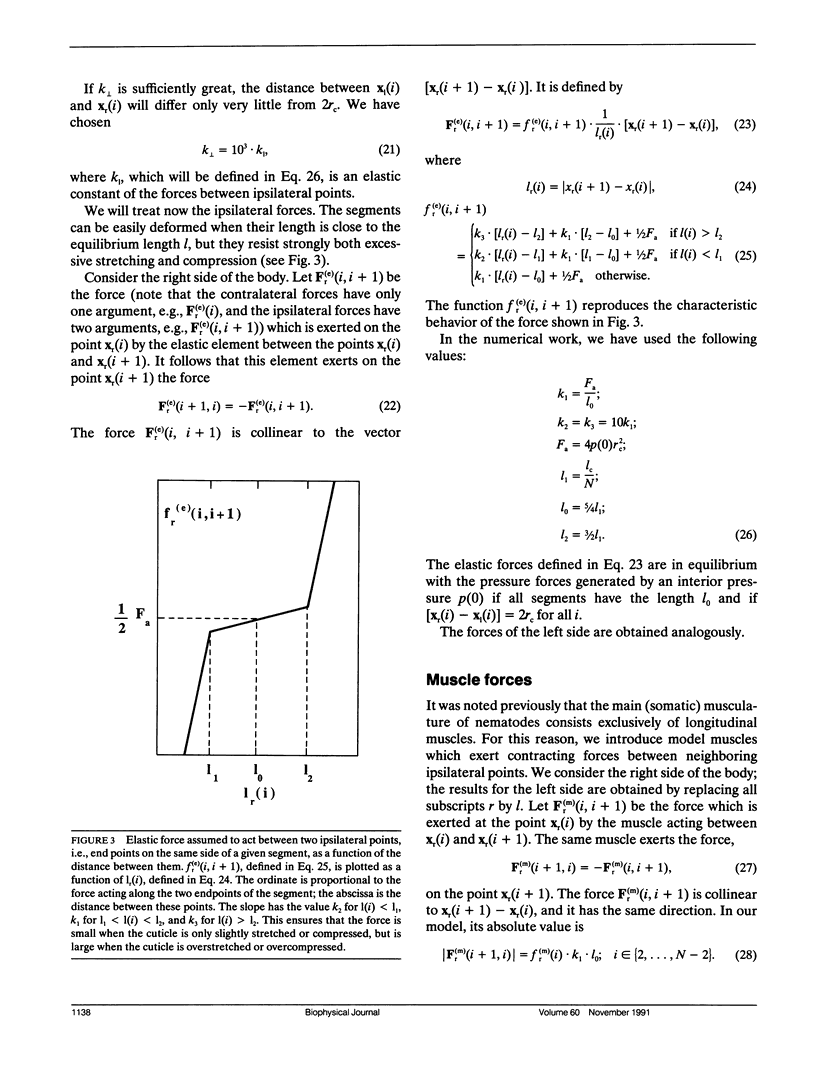
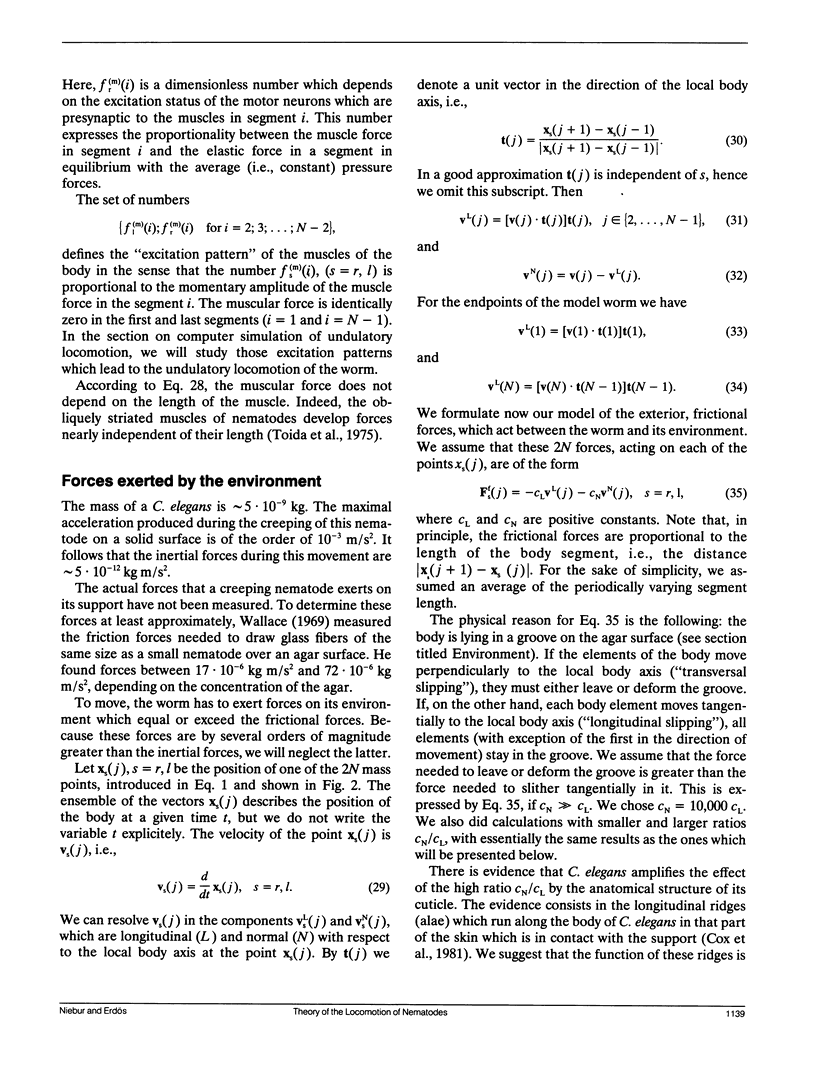
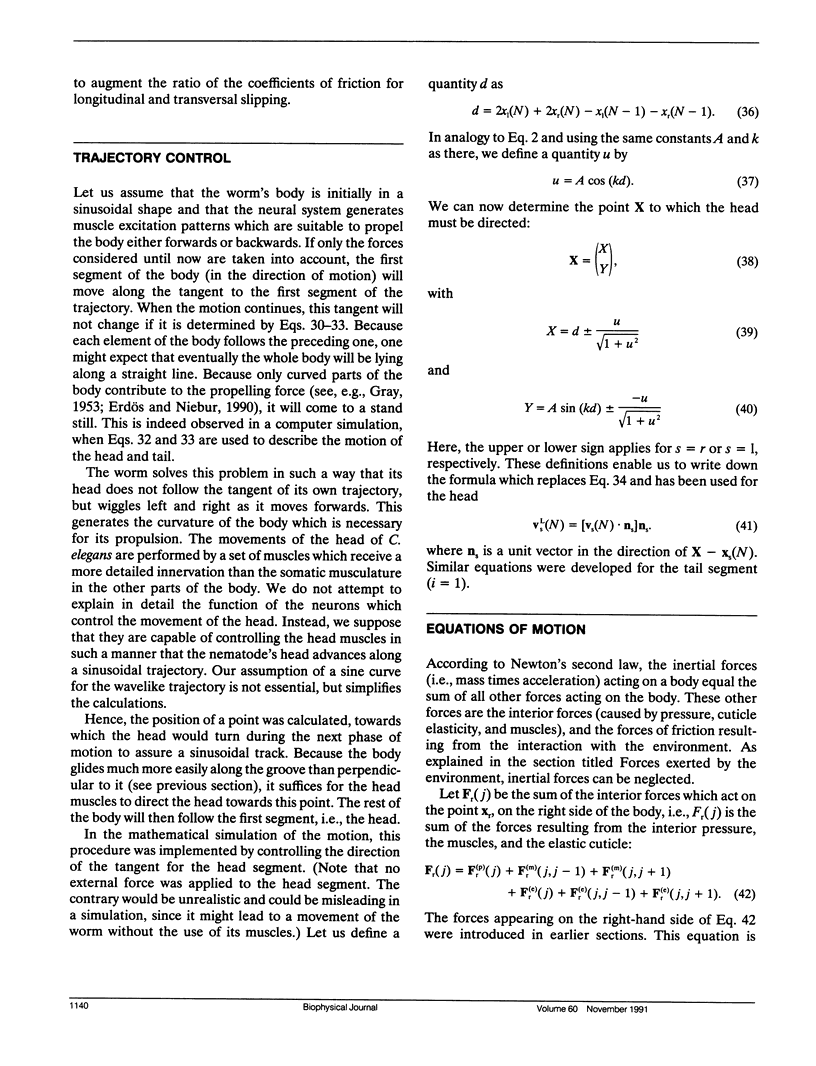
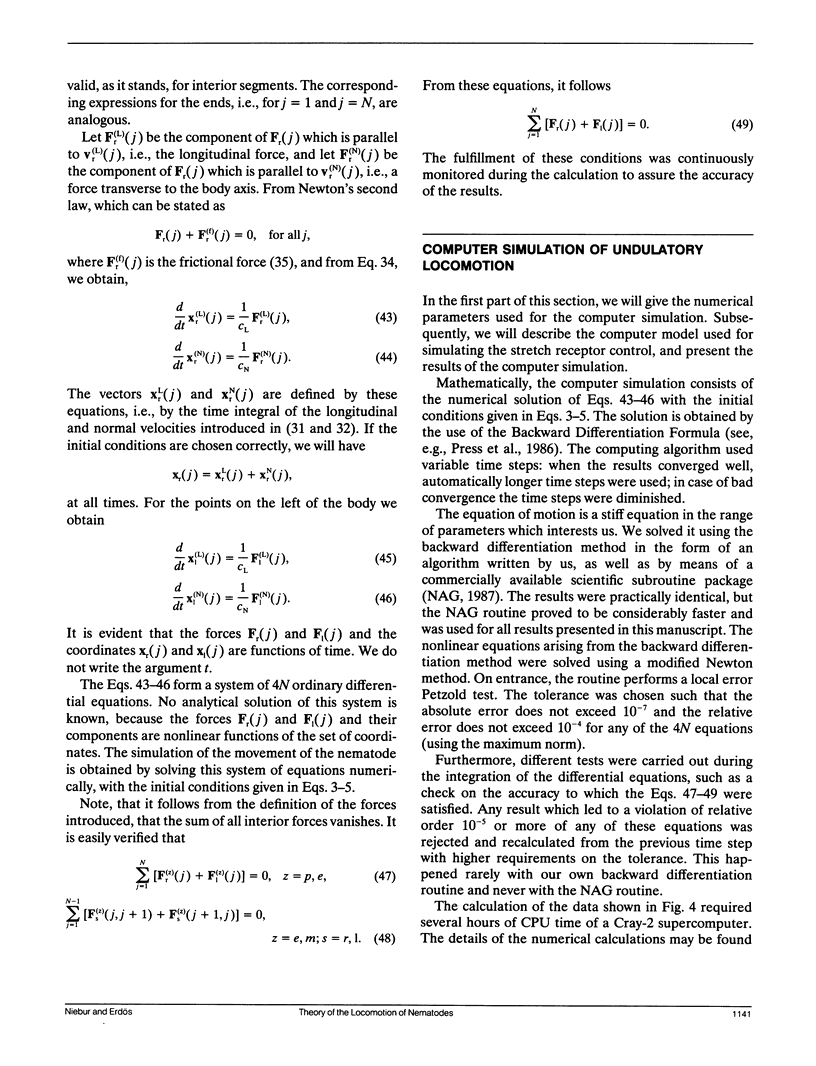
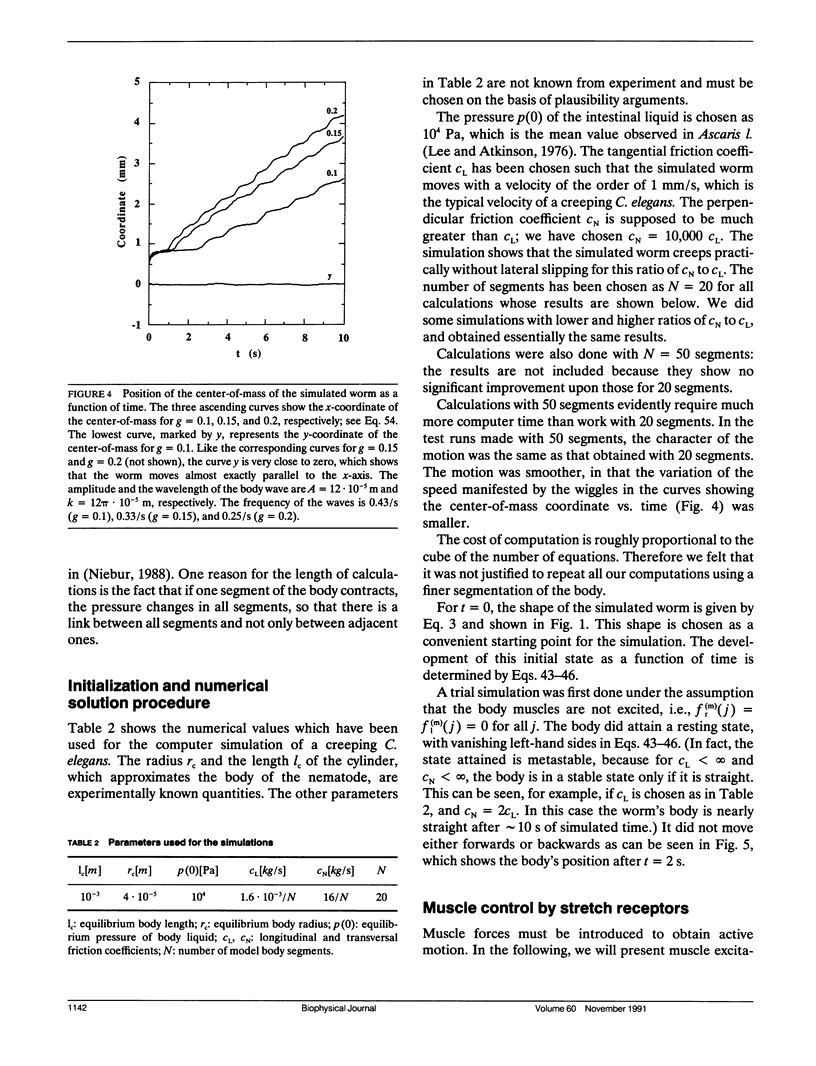
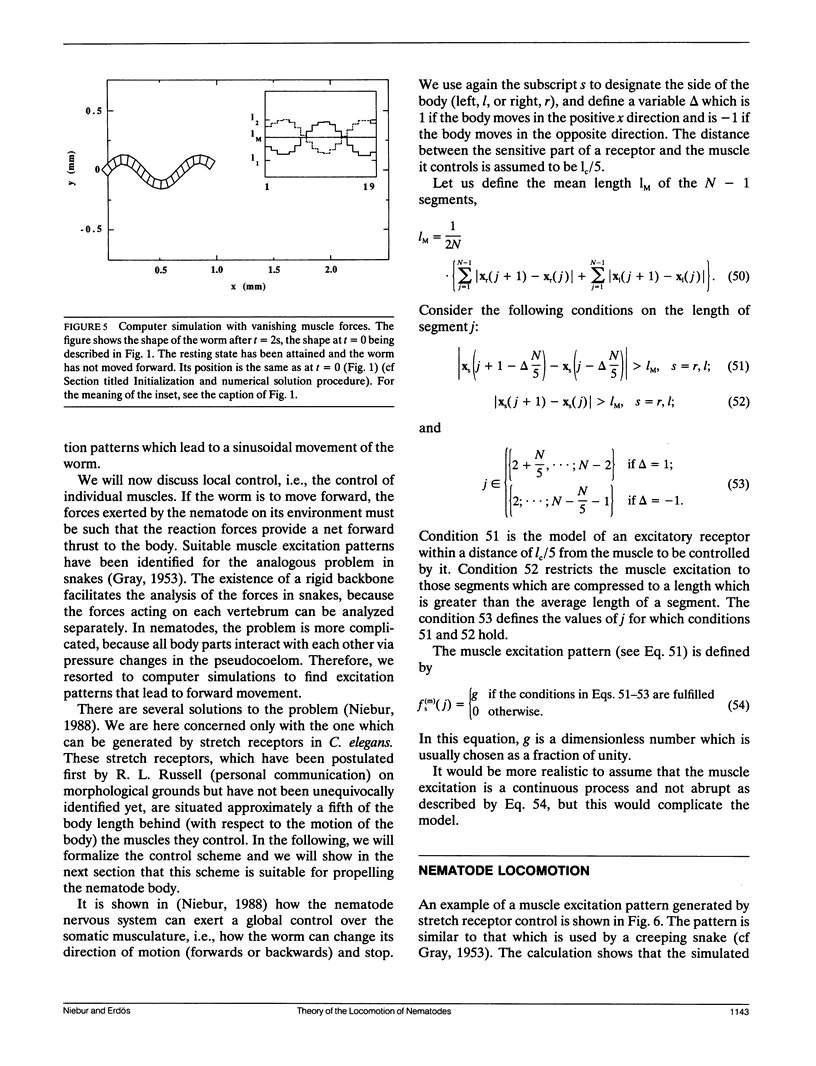
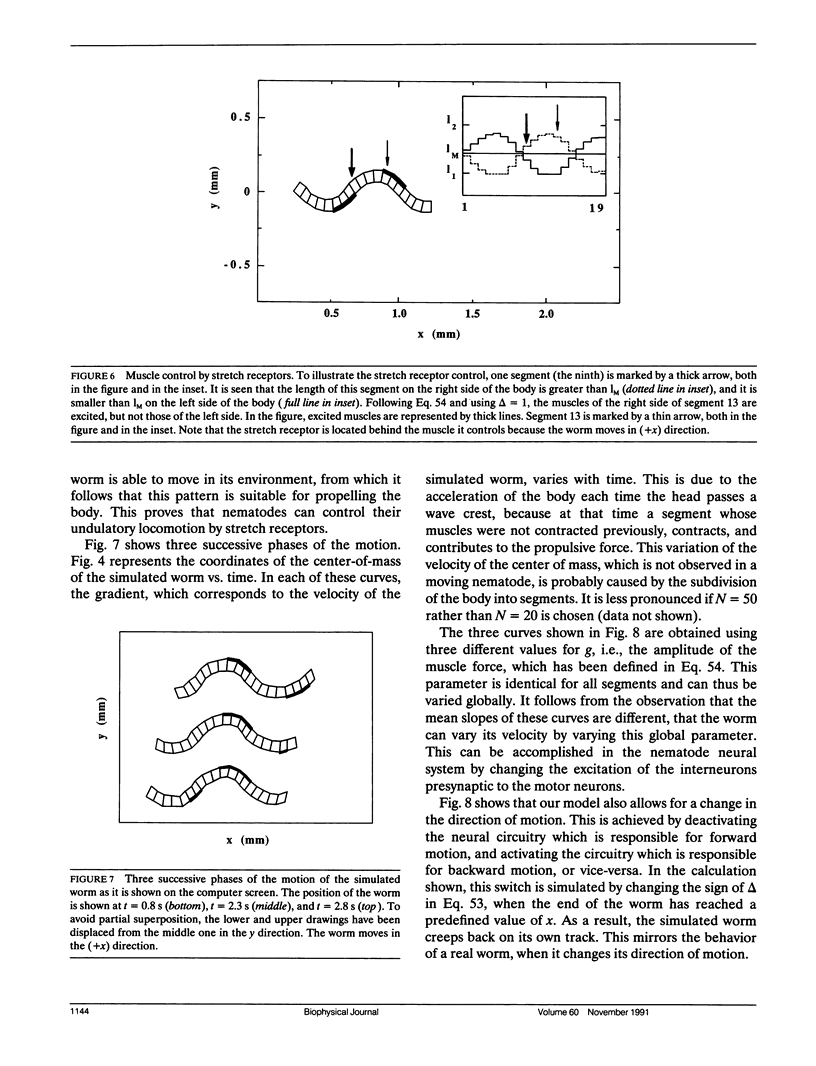
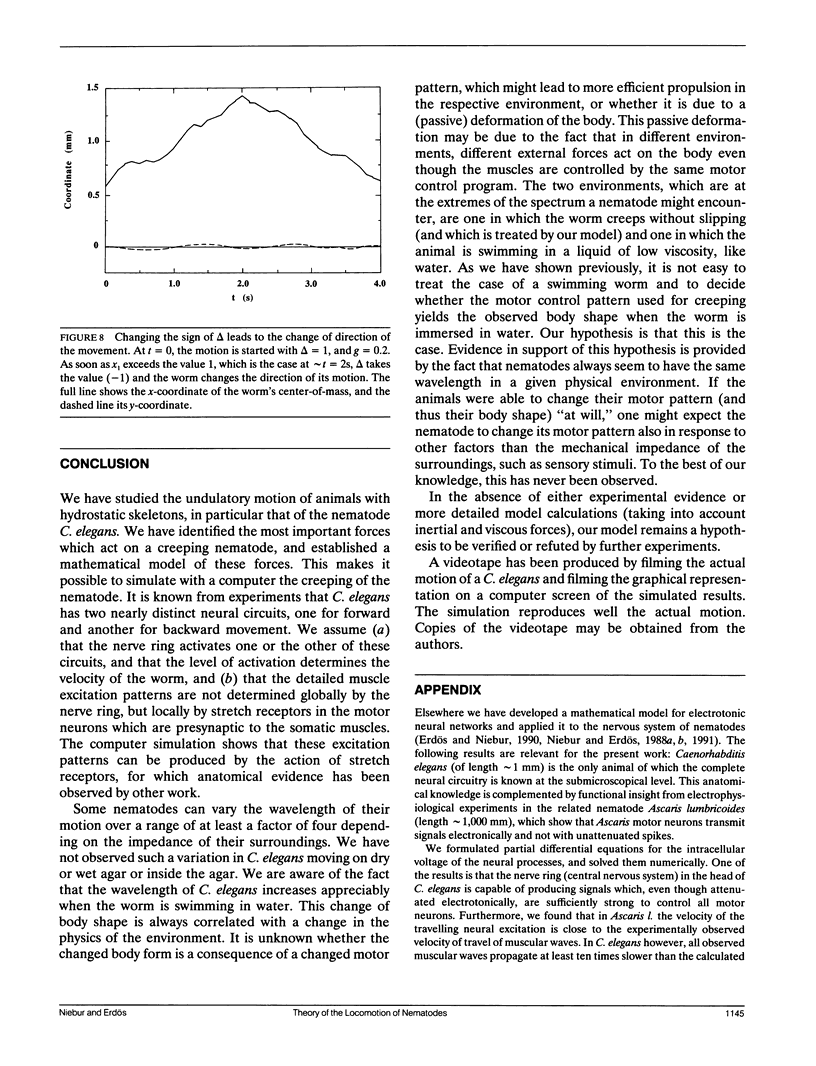
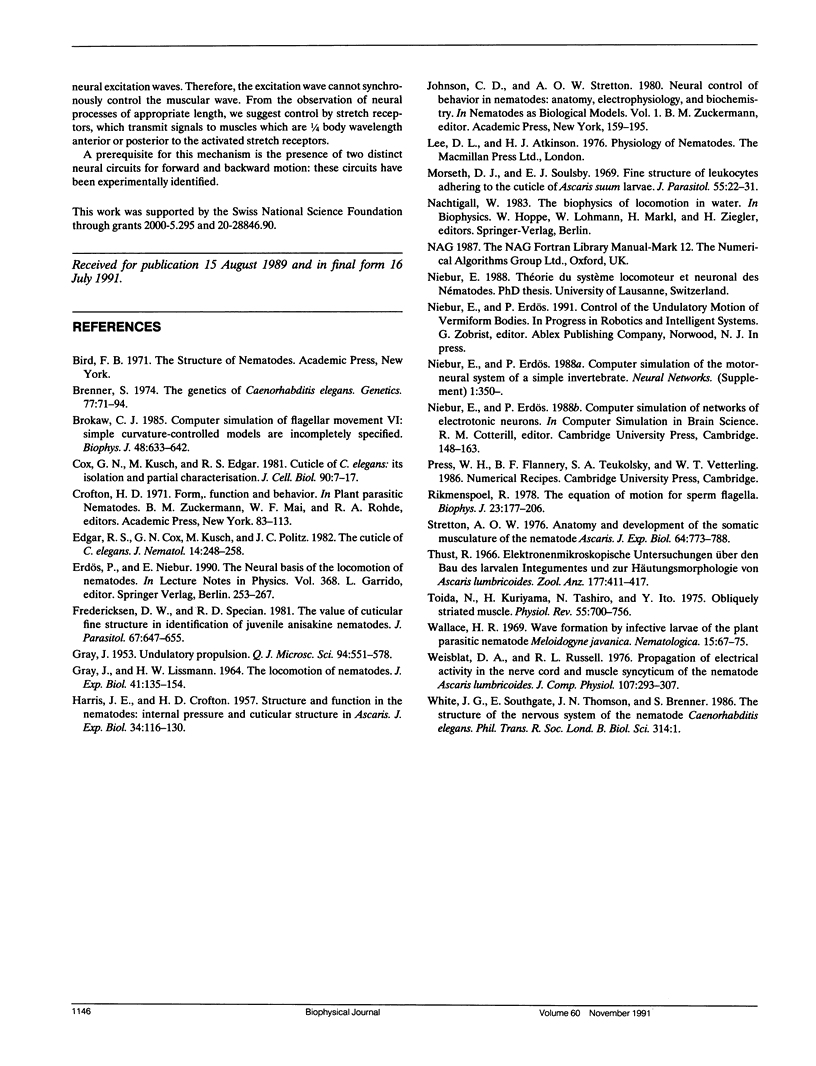
Selected References
These references are in PubMed. This may not be the complete list of references from this article.
- Brenner S. The genetics of Caenorhabditis elegans. Genetics. 1974 May;77(1):71–94. doi: 10.1093/genetics/77.1.71. [DOI] [PMC free article] [PubMed] [Google Scholar]
- Brokaw C. J. Computer simulation of flagellar movement. VI. Simple curvature-controlled models are incompletely specified. Biophys J. 1985 Oct;48(4):633–642. doi: 10.1016/S0006-3495(85)83819-4. [DOI] [PMC free article] [PubMed] [Google Scholar]
- Cox G. N., Kusch M., Edgar R. S. Cuticle of Caenorhabditis elegans: its isolation and partial characterization. J Cell Biol. 1981 Jul;90(1):7–17. doi: 10.1083/jcb.90.1.7. [DOI] [PMC free article] [PubMed] [Google Scholar]
- Fredericksen D. W., Specian R. D. The value of cuticular fine structure in identification of juvenile anisakine nematodes. J Parasitol. 1981 Oct;67(5):647–655. [PubMed] [Google Scholar]
- GRAY J., LISSMANN H. W. THE LOCOMOTION OF NEMATODES. J Exp Biol. 1964 Mar;41:135–154. doi: 10.1242/jeb.41.1.135. [DOI] [PubMed] [Google Scholar]
- Morseth D. J., Soulsby E. J. Fine structure of leukocytes adhering to the cuticle of Ascaris suum larvae. I. Pyroninophils. J Parasitol. 1969 Feb;55(1):22–31. [PubMed] [Google Scholar]
- Rikmenspoel R. The equation of motion for sperm flagella. Biophys J. 1978 Aug;23(2):177–206. doi: 10.1016/S0006-3495(78)85442-3. [DOI] [PMC free article] [PubMed] [Google Scholar]
- Stretton A. O. Anatomy and development of the somatic musculature of the nematode Ascaris. J Exp Biol. 1976 Jun;64(3):773–788. doi: 10.1242/jeb.64.3.773. [DOI] [PubMed] [Google Scholar]
- Toida N., Kuriyama H., Tashiro N., Ito Y. Obliquely striated muscle. Physiol Rev. 1975 Oct;55(4):700–756. doi: 10.1152/physrev.1975.55.4.700. [DOI] [PubMed] [Google Scholar]


